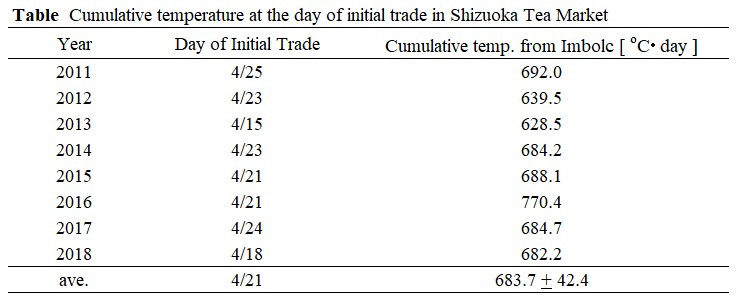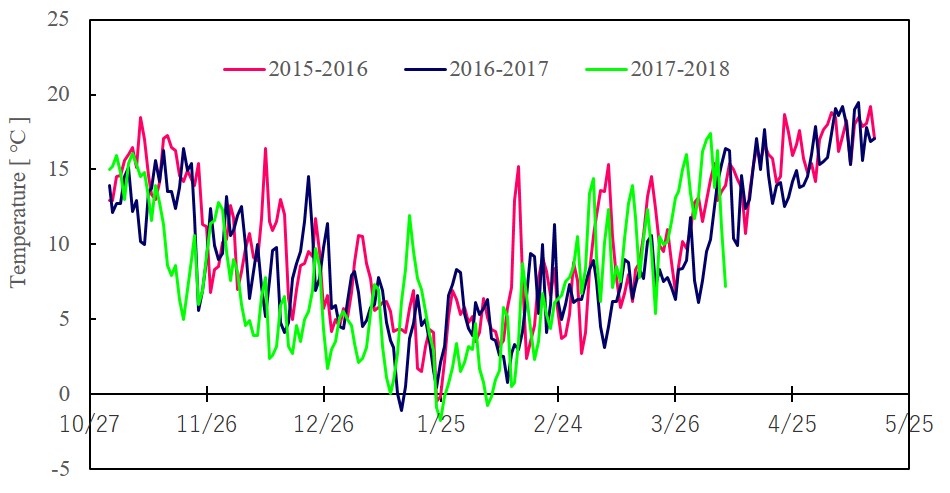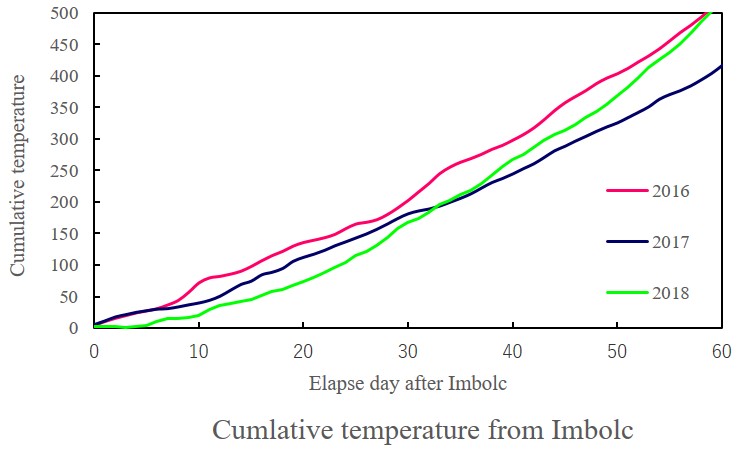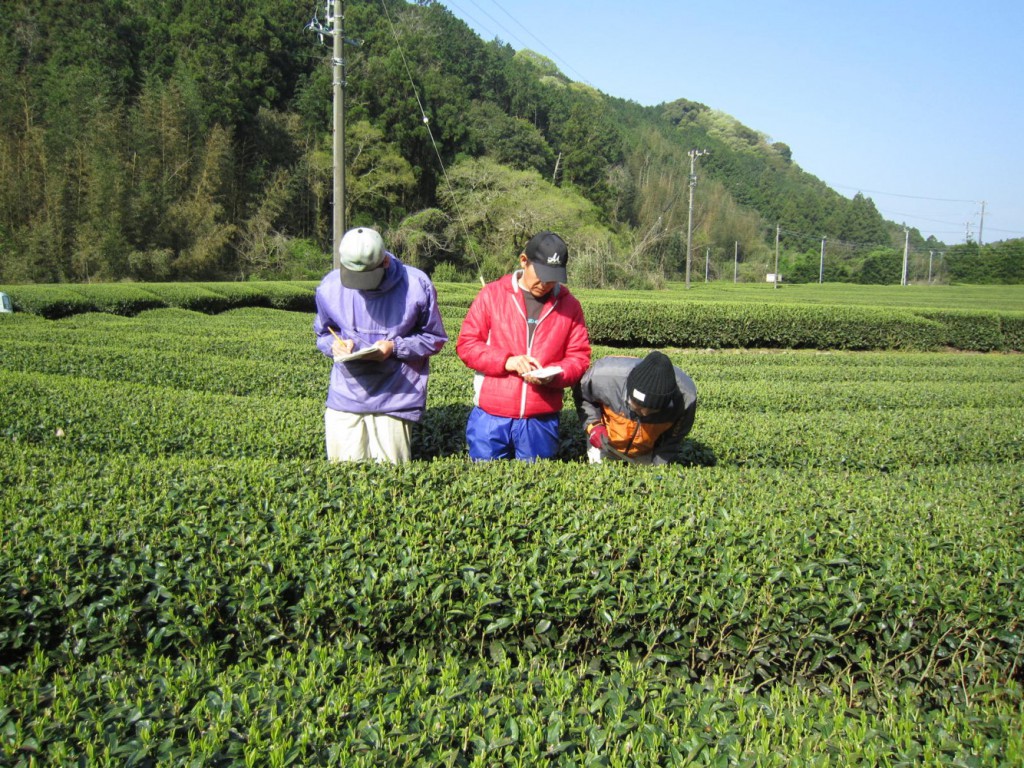The Shizuoka Tea Market will hold the initial trade session of first flush in this season on 18th April. The timing of initial trade is earlier than the average and 4th earliest in the history. The earlier start of first flush trade is derived from higher growth rate of tea shoots due to warm climate.

Compared with the past years, it was colder till the end of February and it got warmer after the beginning of March.

Fig.1 Temperature change from autumn to spring on Makinohara upland.
Tea farmers speculate the sufficient dormancy in winter time could enrich the quality of first flush. Actually the temperature was kept lower in winter time compared with past years. This lower temperature seems to result in the enough dormancy. As posted before, depth of dormancy is kept higher in winter time and the depth correlates with day length and temperature. Dormancy break of late cultivar is more sensitive to temperature compared to early cultivar. The lower temperature in this winter would contribute to the sufficient dormancy. Then the cumulative temperature has raised at the relatively higher rate after February and now exceeded the average. As indicated by Kondo (2004), sprouting time highly correlates with cumulative temperature calculated from the beginning of March, when dormancy of medium cultivar breaks generally. The relatively rapid gaining of cumulative temperature at this spring would provide early sprouting and growth.

Fig.2 Cumulative temperature accumulated from Imbolc in each three year.
Yesterday and today, Makinan Tea Production Cooperative conducted observation survey to estimate the best timing to pluck tea shoots. Tea farmers pay their attention to the growth of tea shoots because the rapidly gaining temperature may cause over-growth of tea shoots. I hope the tea farmers’ dedication to fulfill the best quality of first flush.

Today, many tea factories in Makinohara upland start to pluck tea shoots and produce crude tea. Now Shizuoka prefecture will welcome you with fresh green aroma!
